This week I would like to talk about a bit of a climbing menace known as the Common or Hedge Bindweed (Calystegia sepium). Then later about the fascinating Dodders!

Is there any use to this plant you may wonder?
Please read on and find out!
I will also write about the rest of its family; the bindweed family or Convolvulaceae!
Blue background is for general interest; pink background is for medicinal use or negative information; green background for all sorts of uses. Pictures by Matt Summers unless stated. If the plant occurs in Birmingham and the Black Country, this is mentioned as FBBC in the contents page.
The Bindweeds are in the Convolvulaceae or Bindweed family, which is number 115 in Stace in between the Boraginaceae (114) and Solanaceae (116), which is the potato family.
This family has 4 genera growing in the British Isles namely; Convolvulus, Calystegia, Ipomoea (which are ‘introduced’, mostly ornamental climbers from N. America) and finally Cuscuta or Dodder.
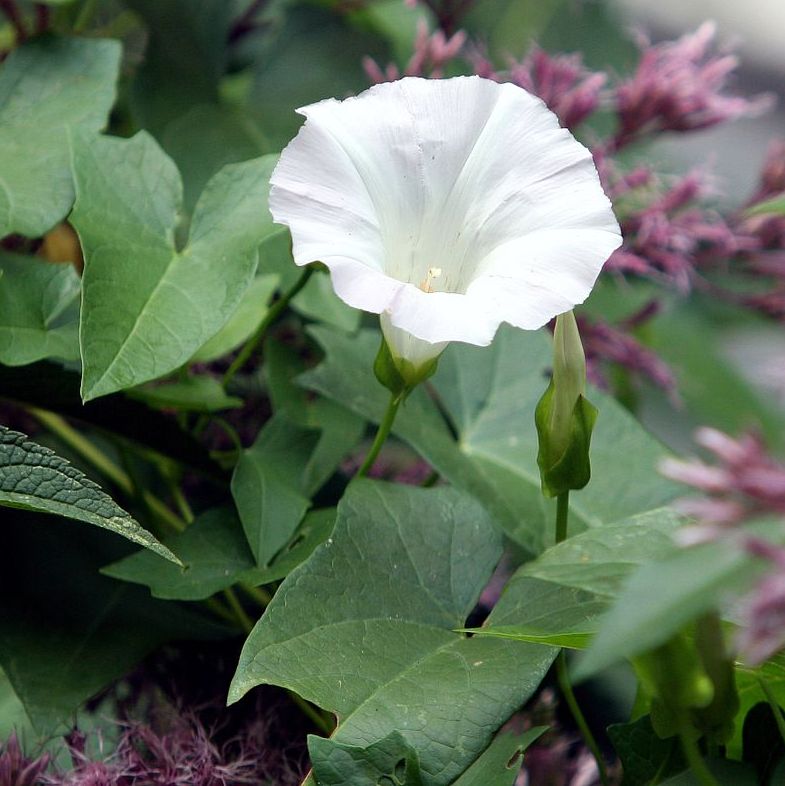
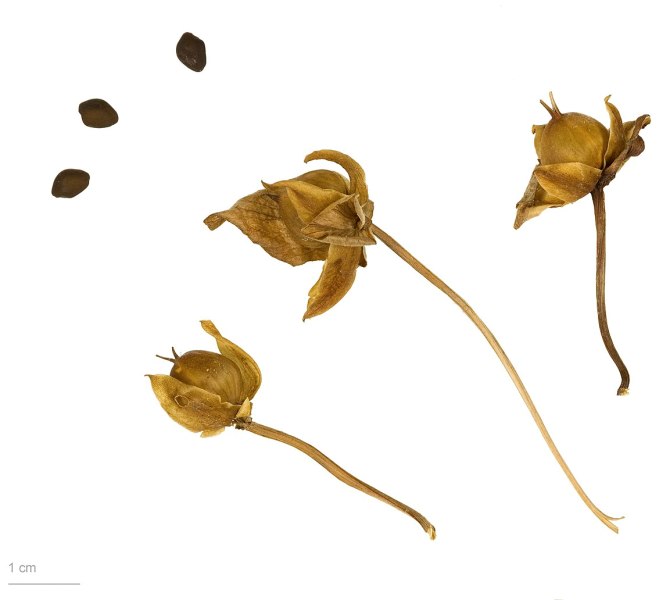
Contents:
Calystegia or Bindweeds
- C. sepium or Hedge Bindweed FBBC
- C. silvatica or Giant Bindweed FBBC
- C. x lucana (C. sepium x C. silvatica) or Hybrid Bindweed FBBC
- C. pulchra or Hairy Bindweed (C. pellita × C. silvatica) FBBC
- C. x howittiorum (C. pulchra x C. silvatica) FBBC
- C. soldanella or Sea Bindweed
Convolulus arvensis or Field Bindweed FBBC
Cuscuta or Dodders
Cuscuta epithymum or Common dodder/ Devil’s Guts
C. europaeae or Greater Dodder
C. campestris or Yellow Dodder FBBC
Calystegia or Bindweeds

C. sepium or Hedge Bindweed
A perennial climber of moist, fertile habitats, occurring in hedges, scrub, woodland edges, banks of watercourses, tall-herb fens, in open willow- and alder-carr, and on railway banks and waste ground. More rarely, it is present on coastal sands and dunes. It also occurs in artificial habitats in built-up areas near human habitations.
This is a plant with showy white flowers. However, because of its quick growth, clinging vines and broad leaves, it can overwhelm and pull down cultivated plants including shrubs and small trees.
Its aggressive self-seeding (seeds can remain viable as long as 30 years) and the success of its creeping rhizomes (they can be as long as 3 to 4 metre) cause it to be a persistent weed and have led to its classification as a noxious weed. (from Wikipedia)
Well: according to PFAF there are several uses for the Bindweed:
The stalks, roots and young shoots can be cooked or steamed and
- have a pleasant sweet taste
- are rich in starch and sugars and very nutritious. However (!)
- It should not be eaten regularly, due to its possible purgative effect
- The root is demulcent, diuretic, febrifuge, poultice and strongly purgative.
- Use of the root is believed to increase the flow of bile
In The Medicinal Flora by J. Barker there is a nice account of this family.
Calystegia sepium is a laxative but without producing nausea and griping as well as an (antibilious) cholagogue.
C. silvatica or Giant Bindweed
C. silvatica has been cultivated in Britain since 1815. It was collected from the wild in 1863 but not generally recognized as distinct from C. sepium until 1948 (Hough End Clough, South Lancashire), by which time it was widespread.
C. x lucana (C. sepium x C. silvatica) or Hybrid Bindweed
C. x pulchra or Hairy Bindweed
A climbing perennial herb, found naturalized in hedges and on waste ground, usually close to human habitations. Reproduction is mainly vegetative and seed rarely ripens in our area, though when established populations may persist for many decades.
This is a ‘Neophyte’ (see an earlier post) and cultivated since 1823. The earliest specimens from our area were collected in 1867 (Twickenham, Middlesex) and 1884 (Edinburgh, Midlothian), and retrospectively identified from herbarium material following its recognition as a distinct species by Brummitt & Heywood (1960).
C. x howittiorum (C. pulchra x C. silvatica)
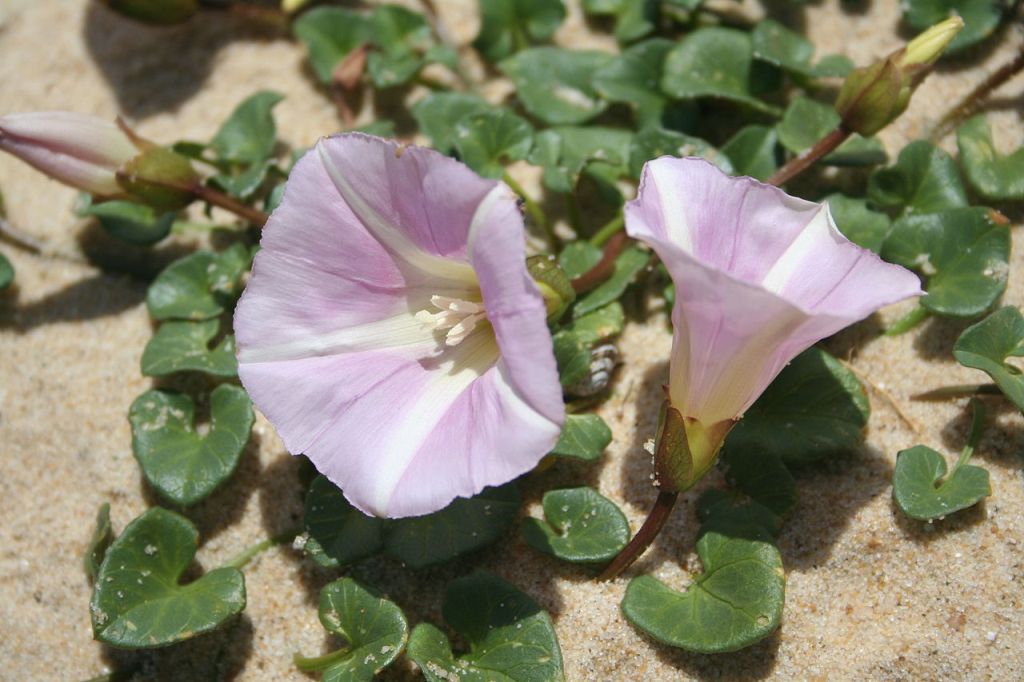
C. soldanella or Sea Bindweed
The leaves and root are duretic and laxative.
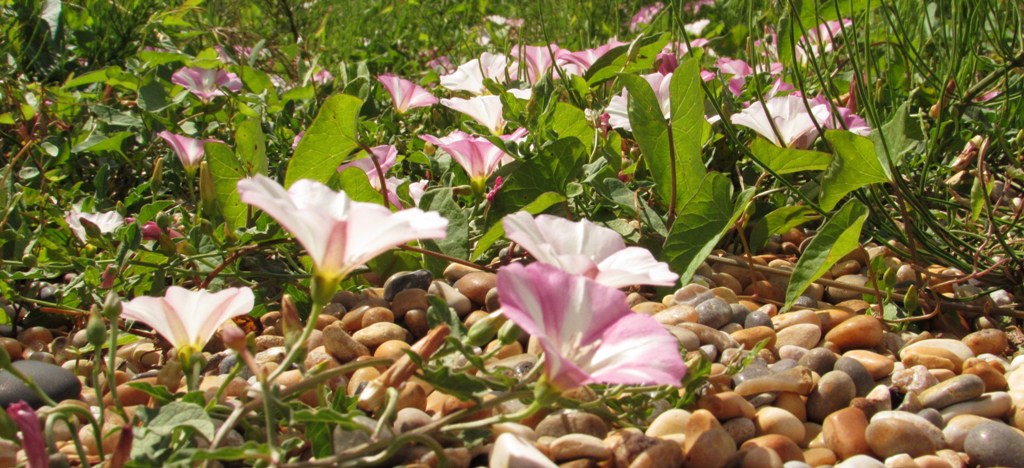
Convolulus arvensis or Field Bindweed
A trailing or climbing perennial herb, found on waste or cultivated ground, waysides, railway banks, open scrub and rough or short grassland, including disturbed chalk downland.
This other ‘Bindweed’ is very pretty and the flowers are pollinated by bees and flies.
It can be very invasive but has some good uses according to PFAF.
The plant harbours tobacco mosaic virus of the Solanaceae and so should not be grown near potatoes, tomatoes and other members of that family.
- The plant has been used as a flavouring in a liqueur called ‘Noyeau’.
- The stem is used as a twine for tying up plants etc. It is fairly flexible and strong but not long-lasting.
- A green dye is obtained from the whole plant.
- On sunny days the flowers diffuse a scent of heliotrope.
- The root, and also a resin made from the root, is cholagogue, diuretic, laxative and strongly purgative. The dried root contains 4.9% resin.
- The juice of the root is used in the treatment of fevers.
- A tea made from the flowers is laxative and is also used in the treatment of fevers and wounds.
- A cold tea made from the leaves is laxative and is also used as a wash for spider bites or taken internally to reduce excessive menstrual flow.
Cuscuta or Dodders
These are fascinating parasitic plants with thin twining stems, which attach to other plants by absorptive pads. The leaves are small and scale like. Flowers are many and in small globose heads.
These are the species native to the B.I.:
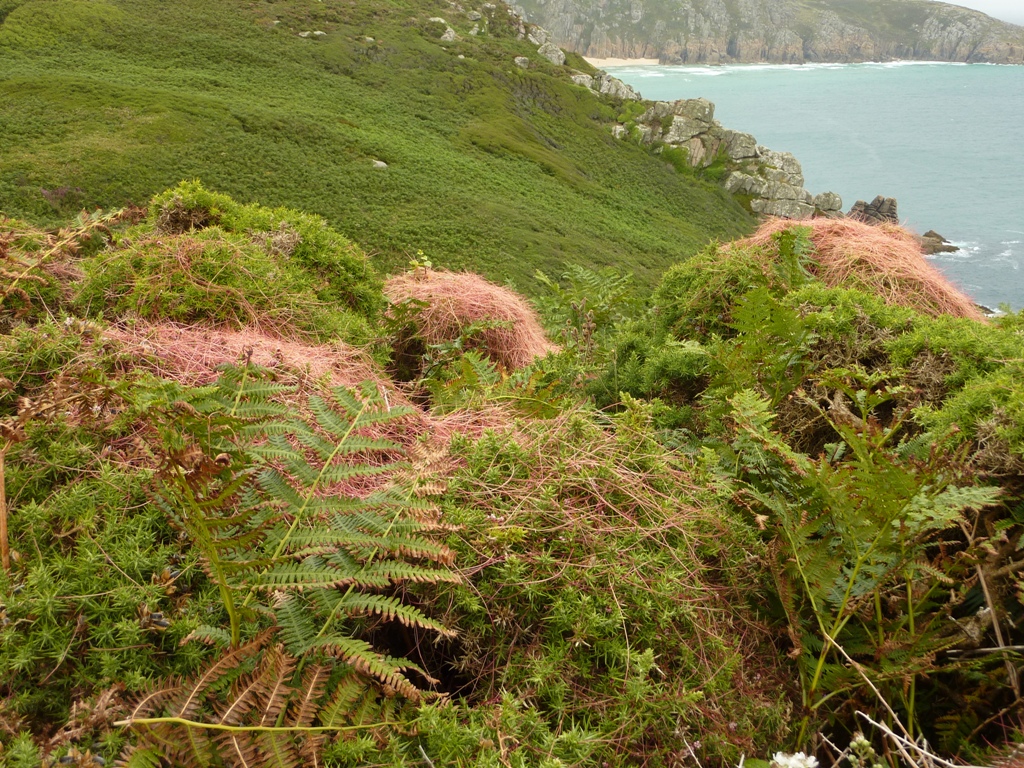
Cuscuta epithymum or Common dodder/ Devil’s Guts
An annual, rarely perennial, rootless twining herb, parasitic on the stems of a wide variety of small shrubs and herbs, most frequently Calluna vulgaris, Thymus drucei, Ulex gallii and U. minor, on lowland and coastal heathlands, chalk downland and fixed dune grasslands.
Chronic constipation (especially with flatulence and atonic dyspepsia), its action is as a laxative (yet astringent) as well as a carminative and cholagogue.
PFAF has even got more uses:
It supports the liver, being used for problems affecting the liver and gallbladder. The whole plant is antibilious, appetizer, carminative, cholagogue, mildly diuretic, hepatic, laxative and antiscorbutic. A decoction of the stems is used in the treatment of urinary complaints, kidney, spleen and liver disorders, jaundice, sciatica and scorbutic complaints. It also has a reputation as an anticancer agent and as a specific for gout.
The plant should not be used by anyone suffering from haemorrhoids.
A homeopathic remedy is made from the plant.
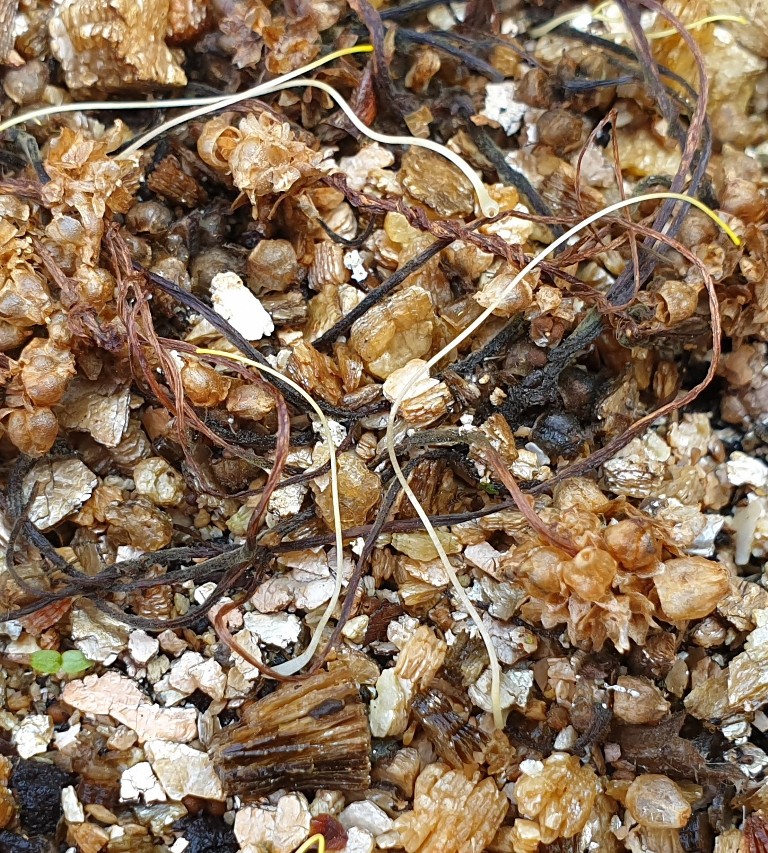
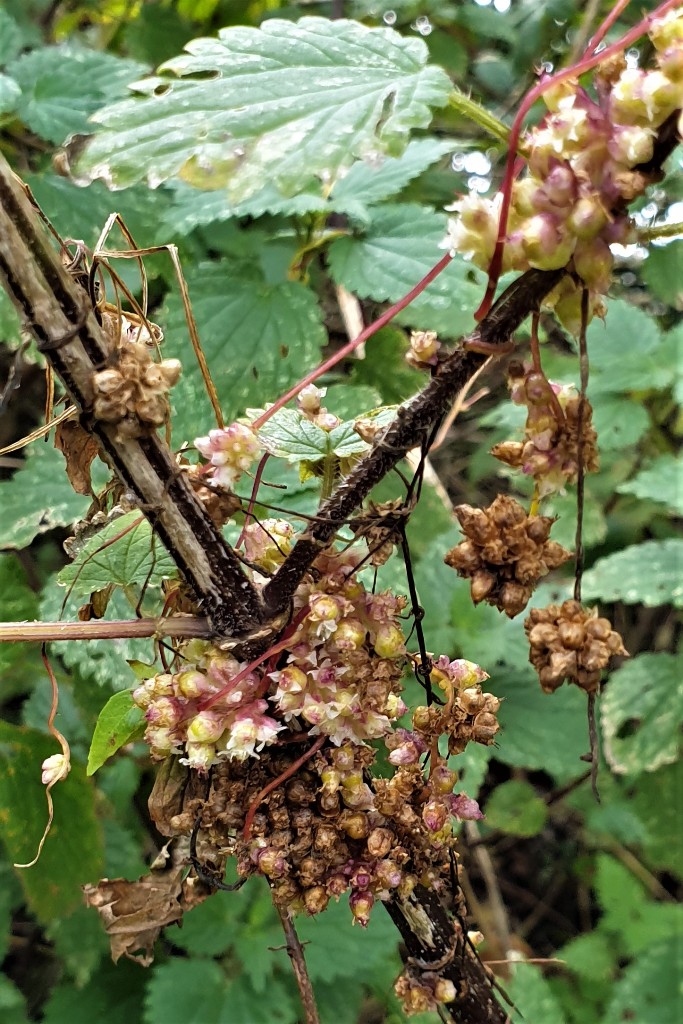
C. europaeae or Greater Dodder
An annual, rarely perennial, rootless twining holoparasite of damp nitrophilous places, especially the banks of rivers, but also hedges and ditchbanks. Its primary host is usually Urtica dioica, rarely Humulus lupulus or other species, whence it can spread to a wide spectrum of secondary hosts.
The entire plant is used in Tibetan medicine, where it is considered to have a bitter, acrid and sweet taste with a heating potency. It is aphrodisiac, renal and a hepatic tonic, being used to increase semen, to treat pain in the wrist and limbs, vaginal/seminal discharge, polyuria, tinnitus and blurred vision.
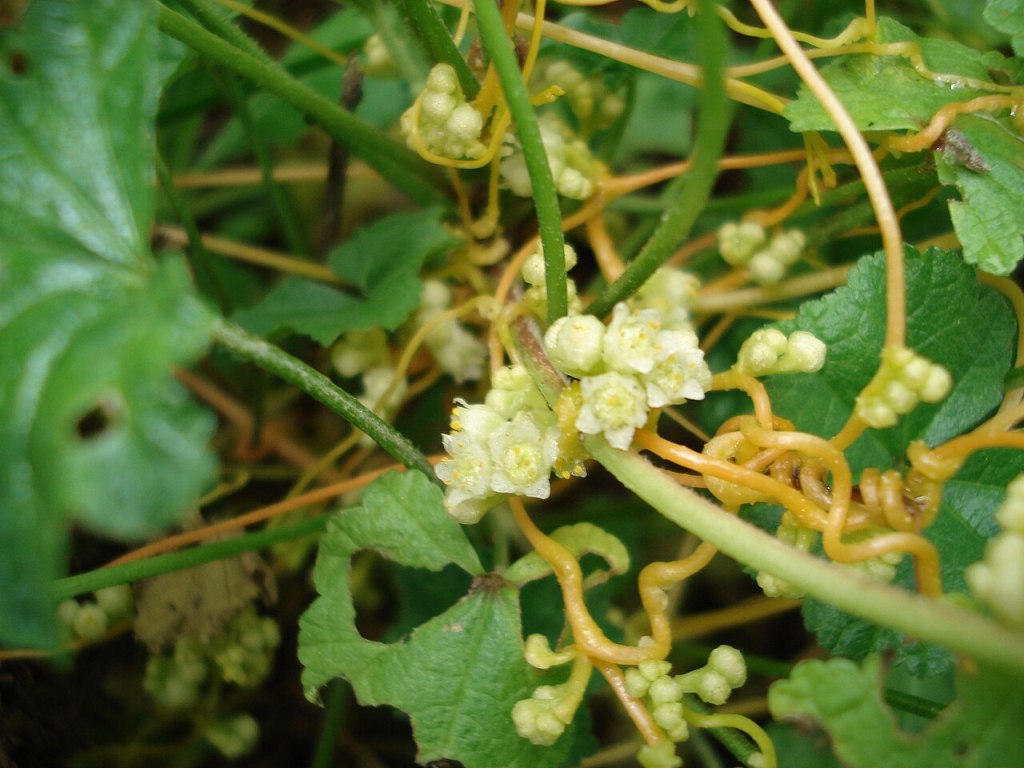
C. campestris or Yellow Dodder (Neophyte)
A rootless, annual parasitic herb, introduced on a range of ornamental plants and agricultural and horticultural seed and birdseed. It usually occurs on garden plants, on crops (especially of carrot, beetroot and lucerne) and on tomato plants at sewage works.

Hi Yoke,
Well, at least the Calystegias have the decency to have white rhizomes, fairly easily spotted and removed in the winter dig. Apart from setting seed and growing from rhizome fragments, I strongly suspect that if the tip of a green shoot gets buried, it will develop into a rhizome.
Despite relentless persecution for over 30 years, I have both C. sepium and the escape from cultivation C. silvatica in my allotment. Don’t know about the hybrid!
All the best,
Ian